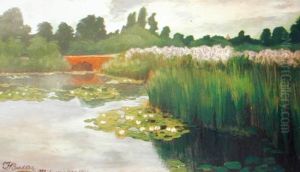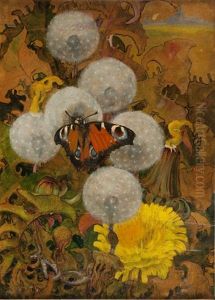Jan Bulas Paintings
Jan Bulas was a Polish graphic artist, illustrator, and poster designer, born on February 14, 1929, in Wilno, which was at that time part of Poland (now Vilnius, Lithuania). His artistic journey began at the Academy of Fine Arts in Kraków, where he studied under the guidance of renowned professors such as Jerzy Karolak and Konrad Srzednicki. Bulas graduated in 1952, at a time when Poland was under communist rule and the cultural scene was heavily influenced by socialist realism and political propaganda.
Despite the restrictive environment, Bulas developed his unique style, which often incorporated elements of satire, humor, and folk motifs. He was particularly known for his work in poster design, a field that flourished in Poland during the mid-20th century. His designs were characterized by their clever use of imagery and typography, often employing a minimalist aesthetic that communicated powerful messages with economy and wit.
Throughout the 1950s and 1960s, Bulas became an important figure in the Polish School of Posters, a movement that gained international acclaim for its innovative and artistic approach to poster design. His work in this period was marked by a playful yet bold graphic language, with a strong focus on color and form. He created posters for various purposes, including cultural events, theater productions, and films.
Aside from his poster art, Jan Bulas also worked extensively as an illustrator, contributing to children's books, magazines, and other publications. His illustrations often featured whimsical characters and scenarios, reflecting his ability to appeal to the imaginations of both children and adults alike.
Jan Bulas' contributions to the field of graphic design and illustration were recognized both in Poland and abroad. He participated in numerous exhibitions and won several awards for his work. Despite his death on October 21, 1996, Bulas' legacy endures, and his posters and illustrations continue to be celebrated for their creativity and enduring visual impact. His body of work not only represents a significant chapter in Polish art history but also stands as a testament to the power of graphic design as a form of artistic expression.

